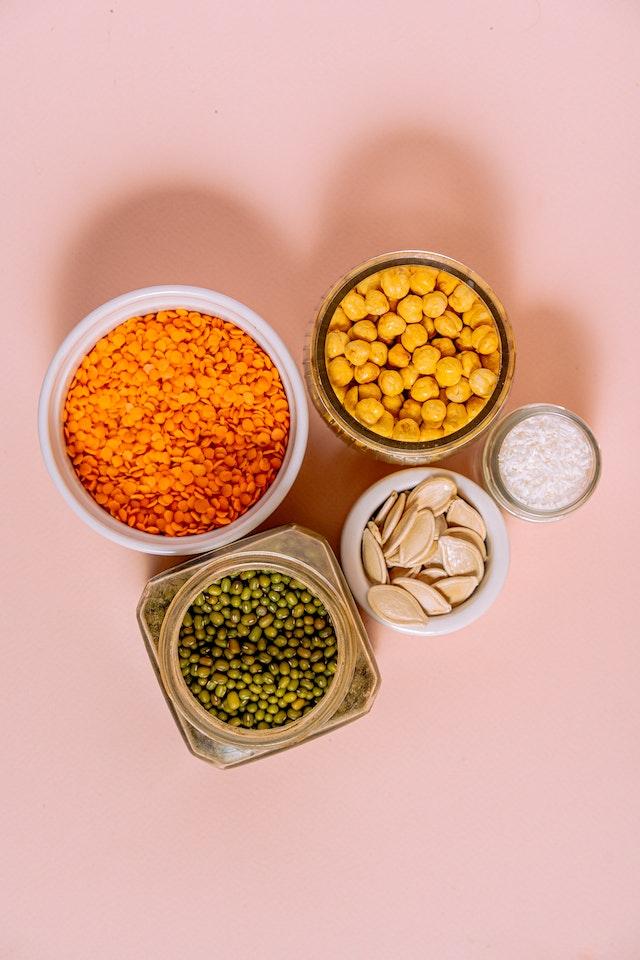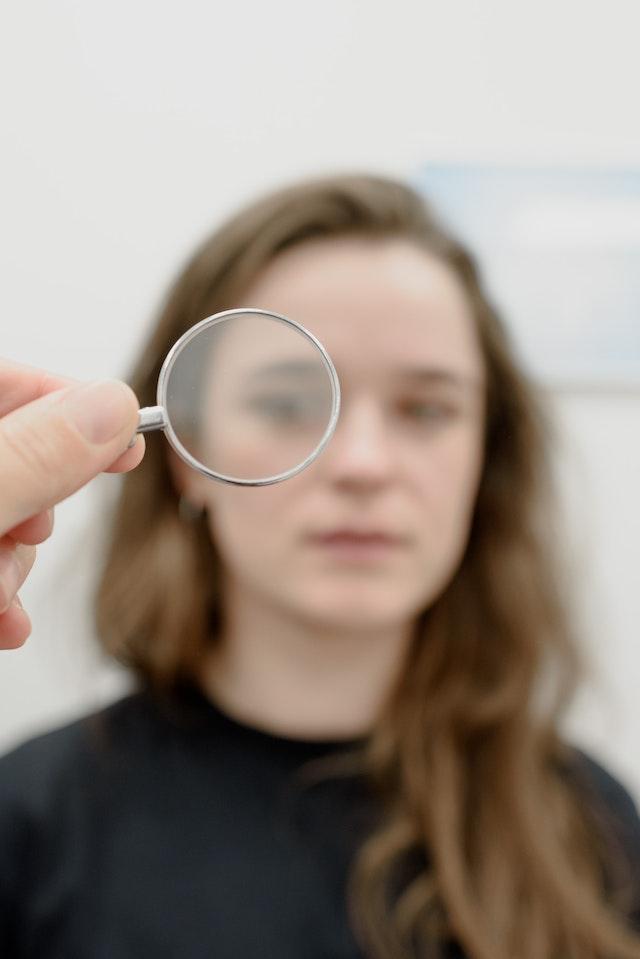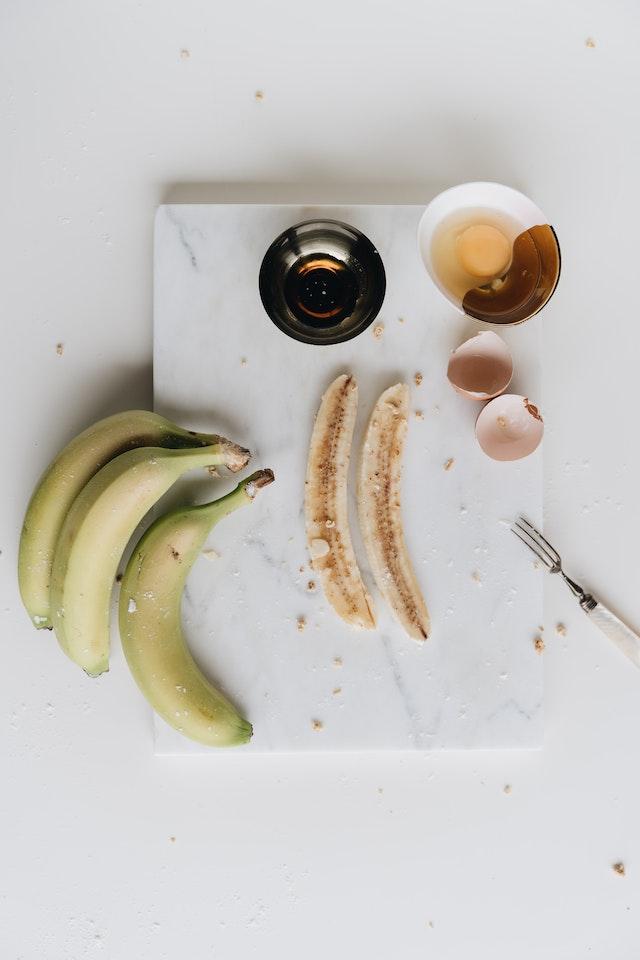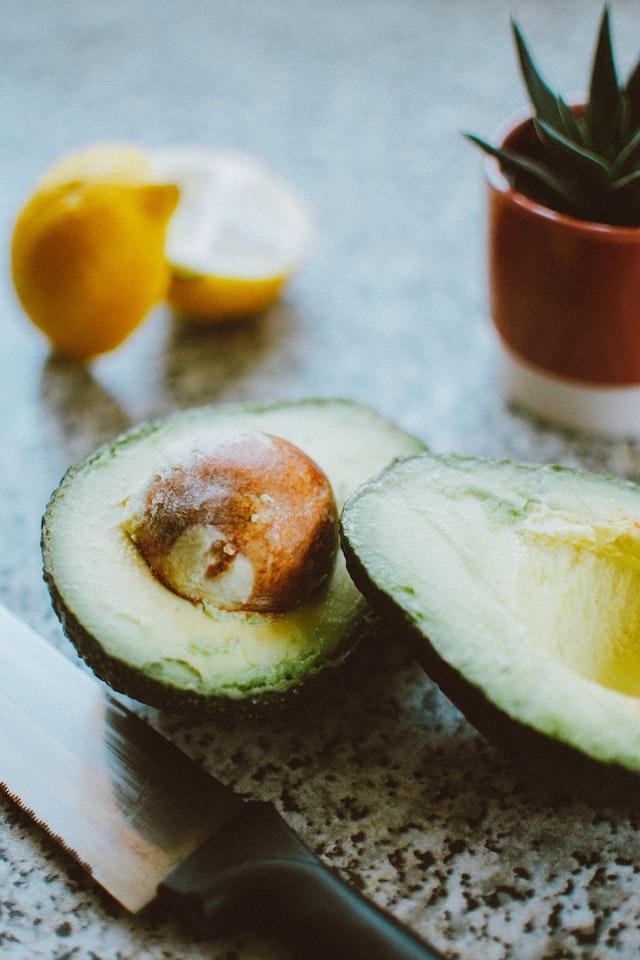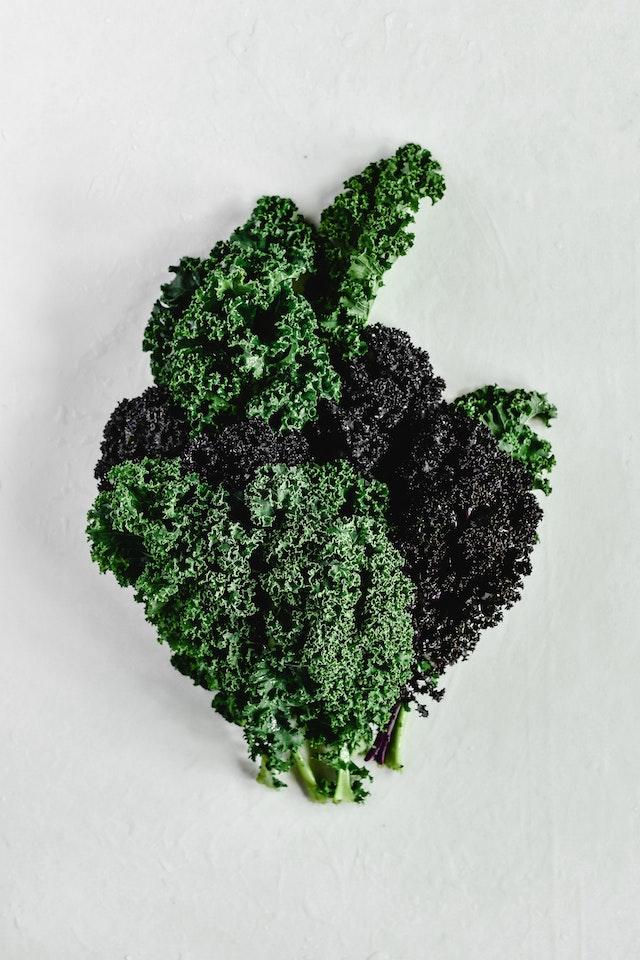Archive for October 2022

What Can Diabetics Drink Besides Water?
Diabetes often requires strict diets to manage and as such, even finding the right drink isn’t always an easy task. As diabetes continues to ravage the globe, more information arises every now and then raising even more confusion as to what is true and what is false pertaining to diabetes.
For instance, a lot of debates have emerged on whether drinks like coffee are helpful or actually harmful to insulin resistance or whether zero-calorie diet sodas cause weight gain, among several other emerging issues.
Nevertheless, similar experts have also often recommended several specific drinks, banking on their healthy nutritional composition that would otherwise scale down the diabetic manifestations.
More Drink Suggestions for Diabetics
Milk
It is no secret that milk is among the most treasured drinks in the world for its natural and healthy benefits. It is therefore not just a drink for infants but can also fulfill other health benefits to other individuals such as those with diabetes, among others.
For instance, consuming milk provides the body with several nutrients and minerals such as vitamin D, calcium, magnesium, and potassium, all of which the body requires to operate efficiently.
Additionally, several published studies have also indicated that milk may boost weight loss. For instance, in one of the studies, there were 322 individuals trying to slim down some of whom had type 2 diabetes while others heart disease.
The results indicated that those who drank the most milk every day, which was about 12 ounces daily, shed about five more pounds over the study period than those who had the lowest daily intake averaging half a glass daily.
Experts, therefore, recommend at least 2 to 3 daily servings of dairy products, this should include low-fat or fat-free milk for associated health benefits.
This probably sounds a bit too much but with proper planning, it can be achieved by as simple a routine as drinking a glass with breakfast or choosing dairy for desserts like sugar-free pudding or mousse, or yogurt, fruit parfait, among others.
Whichever mode of consumption you would prefer, 12 grams of carbohydrate must always be factored in every 8 ounces consumed.
In fact, you can even make yourself some low-fat chocolate milk, if you are craving some chocolate. Just add cocoa powder and some zero-calorie sweetener to your low-fat milk and your treat is ready.
Sternly avoid purchasing chocolate milk from the stores or any supplier as some of them usually contain lots of sugar. You should especially try chocolate milk after a workout.
Almond Milk
For those individuals who are lactose-intolerant or dislike dairy products, unsweetened Almond Milk would be a great alternative. Some of the dairy and almond milk composing elements are virtually identical such as fat and salt contents.
Cow’s milk may often have slightly higher protein content; however, this is quite insignificant and would not affect healthy diet routines. It is generally agreed by experts that almond milk is often slightly healthier on the basis that it is plant-based and contains Vitamin D in abundance, unlike Cow’s milk.
A break down on the composition of unsweetened almond milk:
One Cup (8 Ounces)
- 40 Calories
- 1 gram protein
- 3 grams fat
- 2 grams carbohydrate
- 1 gram fiber
- Less than 1 gram of sugar
Tea
Tea has been a trendy health topic for several years particularly green and black tea with regards to healthy drinks for diabetics. These tea types usually have abundant antioxidants and no calories. These coupled with the big flavor make it perfect and easy to consume.
A Chinese study conducted specifically on black tea indicated the highest levels of polysaccharides, which slows the process of sugar absorption into the bloodstream.
Another study by German experts also indicated that having 4 cups of tea daily could immensely lower the risk of developing diabetes by at least 16%. Tea has been found to have numerous other health benefits like reducing the risk of stroke, and heart disease, among others.
The tea however needs to be properly prepared with the exception of the following tea drinks which have a lot of added sugar that may affect diabetics negatively;
• Sweetened tea
• Bottled ice teas
Unsweet Tea
This is the most excellent beverage choice for diabetics as it has zero calories and no sugar. Unsweetened tea, therefore, does not in any way impact blood sugar levels and can be healthily and safely utilized by someone with Type 2 diabetes as a beverage of choice.
With the big flavor, you just add a little bit of lemon squeeze and some fresh mint for a tasty drink. Subsequently, such tea would also contribute to body hydration without the risk of a spike in blood sugar levels.
It is important to remember to avoid using sugar or full-fat milk and cream on any of your tea drinks to full proof them against affecting diabetics.
Coffee
A number of studies have been conducted on the association between coffee and diabetics. One such study found that chlorogenic acid, a chemical compound found in coffee, may facilitate the slow absorption of glucose into the bloodstream. As such, their discoveries indicated that optimal coffee drinkers are at a lower risk for developing Type 2 diabetes.
Another research also discovered that for those already diagnosed with diabetes, coffee could raise their blood sugar levels or make it hard for the body to process sugar.
It all, therefore, comes down to an individual’s health status and as such how the coffee would affect their blood sugar.
However, some of the coffee additives like sugar, sweetened creamers, and high-fat milk among other unhealthy foodstuffs can raise blood sugar levels and contribute to weight gain. As such, they should not be part of your coffee intake.
2 to 3 cups a day of coffee is probably fine for the majority. However, any complications like trouble controlling blood sugar after drinking may warrant a cut down on coffee consumption to determine and fix the risk issue.
Fruit Juice
Most people quickly associate juices with sweet sugary drinks. However, as a diabetic, you should avoid juices with tons of added sugar in them as these could disrupt blood sugar balance.
Low-sugar versions of juices such as cranberry, grape juice, and pomegranate should form some excellent choices for your diabetic drinks. They are also high in antioxidants to aid in boosting health. The juice portions must however be keenly regulated as juices contain carbohydrates and fruits some natural sugars.
Real fruit is however rather a better deal than juices. These are usually because of several reasons one of which is the healthiest compositions and associated health benefits. For instance, a 4-ounce serving of 100% orange juice compared to a small fresh orange contains the following;
- 4-Ounce Orange Juice Small Orange Fruit
- 56 calories 45 calories
- 12 grams carbohydrates 11 grams carbohydrates
- No fiber 2 grams blood-sugar-controlling fiber
Juice lovers have the better option of just eating fruits. However, they may also drink low-sodium veggie juice. These have lower concentrations of carbohydrates and calories than fruit juices.
A 4-ounce serving with a meal daily, repeated for at least 3 to 4 days should register significant changes with a blood sugar level rise of about 15 points or more. If little or no change is registered, you can always add a little more juice to improve outcomes.
Frequently Asked Questions (FAQs)
Can diabetics drink Coke Zero?
Individuals with diabetes should avoid coke and many other soft drinks. This is because, despite being sugar-free, Coke Zero still has alternative sugar substitutes which may not be healthy for managing or reducing blood sugar levels. Alternative drinks should be considered.
What is the best way to hydrate for people with diabetes?
The best way to hydrate for any individual is to drink plenty of fluids. These fluids are however limited for diabetics who should focus on water or sugar/calorie-free beverages like sugar-free lemonade, seltzer water, and tea, among others.
While hydrating, you should also adhere to the following guidelines to stay hydrated always;
• Keep cool during exercising
• Regularly monitor blood glucose level
• Be conscious of heat exhaustion
• Keep insulin cool
What drink lowers blood sugar?
There are several drinks that can lower blood sugar level. One of these is tea, specifically chamomile. This was proven in a study where participants who drank a cup of this tea after every meal, three times per day and for a consecutive six weeks, registered a reduction in blood sugar levels, insulin, and insulin resistance.
Is alkaline water good for diabetes?
According to several studies conducted over the years, experts have indicated that consuming water with a pH of between 9.5 to 11.5 have often proven effective in lowering random blood glucose levels, especially among those with Diabetes mellitus Type 2.
Is Gatorade OK for diabetics?
Gatorade has a very high glycemic index scoring up to 89. As such, it can be rapidly digested, absorbed into the bloodstream, and metabolized implying that it could result in fast and significant blood sugar fluctuations in the body.
It should therefore be avoided as it could result in catastrophic health complications among diabetics who need to stay clear of sudden and substantial blood glucose changes.
Can drinking lemon water help manage diabetes?
In some way, drinking lemon water may indirectly impact the blood sugar levels of diabetics and influence them to come down to normal ranges. However, lemon water can help prevent untimely spikes in blood sugar.
Can blood sugar levels be lowered by drinking lots of water?
Most definitely, water absorbed into the bloodstream essentially dilutes the sugar concentrations lowering blood sugar levels in the process. The low blood sugar levels further reduce insulin resistance in the bloodstream taming hunger cravings.
What should be the golden drink for lowering blood sugar?
There are numerous options and remedies to choose from. However, my favorite is a mixture of two tablespoons of gooseberry juice and a pinch of turmeric. This remedy will effectively keep your blood sugar levels in check. You should drink it in the mornings for maximum benefits.
Can individuals with diabetes drink ginger ale?
Yes, but you have to ensure that you stick only to the spice itself and avoid drinks with loads of sugar.
For instance, consuming processed drinks like ginger ale and ginger beer should be avoided at all costs. This is because these processed drinks come loaded with lots of sugar which can be problematic for diabetics.
Is cranberry juice good for diabetics?
Cranberry juice is among the few drink choices that are excellent for diabetics as long as the juice is sugar-free. This way, it can aid manage diabetes by reducing side effects while also increasing the affected people’s quality of life due to the abundance of antioxidants.
Is coconut water good for diabetes?
Tender coconut water usually registers low on glycemic index. This coupled with low natural sugar, coconut water should be safe for diabetics as it would not cause a spike in blood sugar levels or significant impacts on diabetes symptoms. It is therefore good for diabetics.
Does okra water help reduce blood sugar?
This is a widely contested debate. However, some information has emerged claiming that drinking ‘okra water’ can often help lower blood sugar levels among diabetics.
Making the ‘okra water’ is quite simple. Cut up okra into several pieces, set them in water, and let it soak overnight. In the morning the drink is ready and therefore can be consumed safely.
What is the healthiest drink besides water?
A healthy drink should encourage positive health outcomes even for sick individuals like diabetics.
Some of the most commonly recommended and healthiest drinks besides water include:
• Green tea
• Mint tea
• Soy or Almond milk
• Fat-free milk
• Black coffee
• Homemade smoothies
• Orange or lemon juice
• Hot chocolate
What kind of milk can diabetics drink?
Diabetics can drink most common milk categories. A cow’s milk is substantially significant for diabetics, however, it usually contains carbohydrates which must always be factored into the entire diet plan to avoid complications.
Skim milk can also be an alternative as it can often have low calories and low-fat contents. However, for lactose intolerant diabetics, almond milk would be a good choice.
What is best to drink first thing in the morning?
As soon as you wake up in the morning, most people often feel a little thirsty from water deprivation all night. As such, water is the best beverage to drink first and foremost in the morning to aid in body rehydration before anything is done.
Is it good for diabetics to consume too much water?
Drinking enough amounts of water can really boost diabetes management. While water hydrates the body, it does not in any way raise blood sugar levels. In fact, water may lower blood sugar levels by eliminating excess glucose through urine or diluting the blood to register low blood sugar concentrations.
What is the recommended amount of water a diabetic can drink in a day?
Individuals with diabetes and essentially everyone are always advised to drink plenty of fluids. As such, women can often drink an average of 7 glasses while men can go to 8 or 9 glasses per day for noticeable health changes.
What should you drink before bed to lower blood sugar?
The most recommended drink before bed is that of apple cider vinegar. As such, a diabetic taking one teaspoon of apple cider vinegar in warm water before sleep should be able to control their blood glucose levels. The drink will further help in the regulation of fasting blood sugar levels in the mornings.

Finger Nails Ridges and Diabetes
Look at your fingernails closely. If you look closely, you could find that your nails are not as smooth as you originally believed.
Think of them like wrinkles in your nail; they frequently grow more obvious as we age. There are several reasons why you could have ridges on your fingernails, from stress to renal and thyroid illness. Fingernail ridges are typically not harmful.
Find out more about the meaning and possible causes of ridges on your fingernails.
Vertical Ridges
Normally harmless, vertical ridges frequently develop along the length of our fingernails. Your fingernails’ tips to the cuticle form vertical ridges, which are furrows. They are referred to as bands or longitudinal striations at times.
Vertical ridges in the nails can also result from vitamin shortages or poor diet in addition to aging but are typically not a cause for alarm.
Additionally, vertical ridges and alterations to your nails’ tops that cause them to be concave or spoon-shaped can be brought on by iron deficiency anemia and cause these modifications.
As a result of a delay in cell turnover, older persons frequently develop slightly vertical ridges in their fingernails. During this process, new skin cells created under the skin’s surface rise to replace the dead cells removed from the surface.
Further, a medical problem could be to blame if you also have other symptoms, such as nail color or texture changes. The ridges could appear brittle or glossy if you have trachyonychia (twenty-nail dystrophy). You may have onychorrhexis, a disorder requiring medical attention if your nails have vertical ridges and brittle, breaking nails.
Horizontal Ridges
On your fingernails, horizontal ridges may indicate an issue, whereas vertical ridges may not be harmful. Horizontal ridges are frequently brought on by Beau’s lines, a condition.
It frequently occurs in conjunction with uncontrolled diabetes, peripheral vascular disease, and deficits in zinc. Scarlet fever, measles, mumps, and pneumonia are a few other ailments that can result in Beau’s lines.
It might just be your body fending against an illness if these horizontal ridges in your nails start to form periodically. You might wish to check to see if a chronic ailment is to blame if these ridges recur frequently. If Beau’s lines develop, the acute renal disease may also be present.
The development of Beau’s lines on all 20 nails could be a sign of:
• Mumps
• Parathyroid disease
• Unmanaged diabetes
• Syphilis
• Respiratory conditions
• Illnesses that cause prolonged high fevers
• Zinc deficiency
Chemotherapy may also cause Beau’s lines.
Red or brown spots may develop beneath your nails as a result of trauma. If you see dark brown, black, or red color changes under your nails without having had nail trauma, it may be a sign of a more serious problem, such as endocarditis or melanoma.
Diagnosing the cause of fingernail ridges
Examining changes in your nails should be done by a doctor. If an injury causes damage to your nails, you can wait a few weeks to decide whether to visit a doctor to watch how the nail and your finger heal. If the damage causes any of the following, you should see a doctor immediately.
• A clean or rugged cut through your nail
• A crushed nail
• A nail that is torn off
• Bleeding under your nail
In addition to looking at your nails at your appointment, your doctor will inquire about any additional symptoms you may be having. In cases where renal disease, diabetes, or nutritional deficiencies are suspected, your doctor may also request urine and blood testing.
If it appears that the ridges are brought on by a skin problem, a dermatologist can help you develop a treatment strategy. Your dermatologist might request some fingernail clippings to have them examined in a lab for indications of infection if the source of your fingernail ridges is unclear.
Treating ridges in fingernails.
Treatment focuses on the underlying cause of the changes in your nails because fingernail ridges are frequently indicators of other health issues.
For instance, if you have diabetes and have developed Beau’s disease, controlling your blood sugar may help to lessen these horizontal fingernail ridges.
Moisturizers for your hands or topical ointments to lessen eczema symptoms may be used as part of the treatment for skin disorders like eczema. If you have low levels of minerals or vitamins, you can be encouraged to change your diet or take supplements such as Magnesium to increase them.
Consult a dermatologist for guidance on how to care for your nails; you’ll want to be careful not to do any more harm.
Diabetic Nail care
A highly essential subject is diabetic nail care. It’s also crucial to remember that the condition of your nails is a fairly reliable indicator of your general health. Diabetic neuropathy is a disorder that frequently affects people with diabetes. This illness lessens the sensation in the fingers and toes.
• You should ensure that you visit your doctor to get your feet examined a few times a year.
• Frequently check your own feet.
• Make sure your shoes are the right size.
• Keep your nails trimmed at least once every six to eight weeks, but avoid going too short.
• Use diabetic nail clippers properly.
The bottom line
In most cases, fingernail ridges are a telltale symptom of age. In older persons, little vertical ridges frequently form. However, it’s crucial to be aware of fingernail ridges and other alterations to the nails. These could be the initial symptoms of a significant health issue.
FAQs
What do diabetic fingernails look like?
The nails might turn yellow in diabetic patients. This coloration frequently results from the way sugar breaks down and how that affects the collagen in nails.
What causes diabetic nail ridges?
Gram-negative bacteria or fungi, which can cause nail infections, are more likely to affect people with diabetes.
Additionally, damage to the nail or nearby skin, such as that caused by deformed or sharply edged nails, neuropathy, and hyperglycemia, raises the risk.
Why do my fingernails suddenly have ridges?
What causes nail ridges? In addition to being a sign of poor nail care, nail damage, vitamin deficiency, or even a more serious medical disease, nail ridges are typically caused by aging.
What do ridges in your nails mean?
Although they might mean several things, nail ridges are mostly harmless. Age is frequently indicated by vertical ridges. Horizontal ridges may be an indication of a variety of conditions, including Beau’s lines, severe nail injuries, and starvation.
Why must people with diabetes be careful when cutting their nails?
Fungi and bacteria can spread from clipping or foot care equipment to open wounds, making diabetes patients more susceptible to illness.
Does type 2 diabetes affect nails?
Uncontrolled diabetes can have detrimental consequences on a variety of organ systems, including the cardiovascular, nervous, ocular, renal, and cutaneous, as well as its impact on the skin, hair, and nails.
Can metformin affect your nails?
There was a noticeable improvement in the nails three months after stopping metformin. Clinicians should be aware of the yellow staining of nails caused by metformin, which is treatable and reversible if caught early.
What vitamins should I take for ridges on nails?
The prevention of vertical ridges in your nails depends on your magnesium intake. The development of new nails and the synthesis of proteins are two more benefits of this mineral.
Iron, zinc, vitamin A, vitamin C, and vitamin D, in addition to other vitamins, can benefit nail health. Research from 2018 indicates that biotin is strongly advised for improving nail health, although additional studies are required to fully grasp the advantages.
Can you buff out ridges in nails?
You can lightly buff your nails to get rid of ridges, according to some dermatologists. However, it is advised to continue nourishing your nails, maintaining good nail hygiene, and consulting a dermatologist for additional guidance.
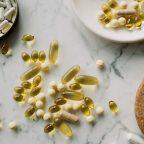
Diabetes and Magnesium
Continue reading if you have type 2 diabetes and are unsure of whether you are receiving enough magnesium in your diet or whether you are deficient in it.
Magnesium and Diabetes
Since magnesium plays a critical role in controlling blood sugar (glucose), it is a good idea to know how much you have, how much you need, and how much it can help you. This is confirmed in a recent World Journal of Diabetes report that the majority of people with type 2 diabetes have low magnesium levels.
More than 300 biochemical processes in the body depend on magnesium, many of which are connected to the metabolism of glucose, insulin, and magnesium. In light of this, individuals with diabetes may anticipate experiencing some issues if their blood or plasma magnesium levels go too low.
For instance, a recent study published in the journal Diabetes found that hypomagnesemia, or a serum magnesium level less than 0.7 mmol/L, “has been strongly associated with type 2 diabetes mellitus,” and that those who have it “show a more rapid disease progression and have increased risk of diabetes complications.”
It has also been reported that elderly people with diabetes are more likely to experience hypomagnesemia, making it possibly even more important to check the magnesium levels in older people with diabetes.
Type 2 Diabetes and Magnesium
The authors continued by stating that individuals with type 2 diabetes who are magnesium deficient are more insulin resistant and have decreased activity in their beta cells, which are the cells that produce insulin.
However, studies have indicated that taking extra magnesium helps with insulin sensitivity, oxidative stress, systemic inflammation, magnesium insufficiency, and glucose metabolism. At the same time, type 2 diabetes and metabolic syndrome have both been linked to insufficient dietary magnesium consumption.
Do you have low magnesium levels?
There’s a good chance that you are deficient in magnesium if you live in the United States, where almost 75% of individuals do not consume the recommended daily allowance of this crucial mineral, even those who have type 2 diabetes.
A blood test can be used to determine your magnesium levels. 1.7 to 2.1 mg/dL, 0.7 to 0.9 mmol/L, or 1.4 to 1.8 mEq/L are considered to be normal levels for plasma magnesium content.
Talk to your healthcare physician about your results because different labs use various measuring standards.
The fact that the body seeks to stabilize blood levels of magnesium by releasing the mineral from tissues and bone in an effort to preserve homeostasis presents one difficulty with testing for magnesium levels.
As a result, even though you could be in the early stages of magnesium shortage, your test results might indicate normal magnesium levels.
Diabetes and Magnesium Supplements
Another study indicated that blood sugar levels and insulin sensitivity improved for individuals at risk for diabetes after taking magnesium supplements.
Taking particular drugs can have an impact on magnesium levels. Digoxin, cyclosporine, laxatives, digoxin, diuretics, insulin, and phenytoin are a few medications that might lower magnesium levels.
Aspirin, thyroid medications, antibiotics (yes, these medications can have both effects), magnesium oxide and chloride-containing items, as well as aspirin, are some of the substances that can raise magnesium levels. Because of poor absorption, the latter type may result in loose stools.
Normal magnesium, which comes in the form of lotion, gel, bath salts, or oil (all containing magnesium chloride), skips the digestive system and is absorbed straight into the cells. This is crucial for anyone who might encounter side effects from taking magnesium orally. Topical magnesium is a wonderful alternative if you are not a huge fan of pills.
The following foods are excellent sources of dietary magnesium: leafy greens, pumpkin seeds, kefir, avocado, black beans, bananas, figs, dark chocolate, almonds, artichokes, and cashews.
FAQs
What type of magnesium is best for diabetes?
According to Healthline, magnesium taurate may be the most effective form of the mineral for controlling high blood sugar.
Is it Ok to take magnesium every day?
Taking a daily magnesium supplement is probably not safe for the majority of people, according to medical specialists, even though the advantages of magnesium supplementation in healthy individuals remain unclear.
Make sure not to take too much magnesium, though. For the majority of individuals, 400 mg or less per day is the maximum dietary limit.
When is the best time of day to take magnesium?
Therefore, as long as you are able to take magnesium supplements consistently, they can be taken at any hour of the day. It may be best for some people to take their supplements first thing in the morning, while others may find that taking them with dinner or just works for them.
Can I take metformin and magnesium together?
Metformin with Calcium, Magnesium, and Zinc did not interact in any way.
Can magnesium cause weight gain?
More than 300 bodily processes, many of which are involved in how you digest energy, depend on magnesium, an essential element. Since it is a mineral, it has no calories and can’t make you gain weight.
What foods are rich in magnesium?
- Pumpkin seeds
- Almonds
- Spinach
- Cashews
- Peanuts
- Chia seeds
- Black beans
- Salmon
- Avocado
- Brown rice
Can I take magnesium and vitamin D together?
Yes. Vitamin D and magnesium can and should be taken together. In actuality, magnesium is significantly responsible for the absorption of vitamin D.
Additionally, the absence of magnesium would prevent numerous nutrients from functioning properly, emphasizing the significance of this mineral.
How long does it take for magnesium to start working?
After using magnesium supplements consistently for one week, the effects start to show.
Which fruit is high in magnesium?
Dried figs, avocados, guavas, bananas, kiwi, papayas, blackberries, raspberries, cantaloupes, and grapefruit are some fruits that are high in magnesium. Magnesium has a 420 mg daily value (DV).
What drinks are high in magnesium?
In addition to coffee and cocoa, which are high in magnesium, other beverages include instant tea, powdered fruit drinks, and powder dairy drink mixes. The amount of magnesium in an instant and ordinary decaffeinated coffee is nearly the same.
Precautions
Please check with your health professional before taking magnesium supplements if you have any medical conditions or take heart medications, diuretics or antibiotics.
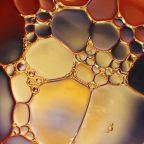
Do You Have Low Creatinine?
What is creatinine?
A natural waste product created from the continuous breakdown of muscle cells is known as creatinine. The creatinine molecules are transported away by blood vessels. After the chemical is broken down, it enters your bloodstream. It is taken out of the blood by the kidney. Urination is the next step in creatinine’s journey out of the body.
Your body’s creatinine levels are kept in check by this mechanism. Normal blood or urine tests, however, can show low or high amounts of creatinine. Normal levels vary according to your body size and muscle mass. For example, a normal range for men is between 0.6 and 1.2 mg/dl, and a normal range for women is between 0.5 and 1.1 mg/dl.
Creatinine is largely eliminated in the urine by healthy kidneys since they have powerful filtration systems inside of them. Creatinine builds up in your circulation as a result of diabetes, which can harm this filtering system and make it harder to remove waste from your blood.
The most common cause of kidney failure in the US is renal disease among people with diabetes.
Symptoms And Causes of Low Creatinine
Depending on the underlying illness, decreased creatinine levels might cause a variety of symptoms.
Causes of low creatinine include:
- A disorder of the muscles, such as muscular dystrophy. Muscle weakness, stiffness, and soreness, as well as reduced movement, are signs of muscle disorder.
- A liver disorder Low creatinine levels are possible as a result of impaired liver function. The signs and symptoms include jaundice, bloating and pain in the abdomen, as well as pale, bloody, or tarry feces.
- Abundant water loss This can be brought on by pregnancy, consuming too much water, and some drugs.
Minimal amounts of creatinine are common in individuals with low muscle mass since this chemical waste is produced during the breakdown of muscle tissue. However, this does not always indicate that a major medical issue exists.
The majority of people lose muscle mass as they age, so a decrease in bulk is typical in older adults. Malnutrition, a diet low in meat, or a diet high in protein-free foods can also cause low muscle mass.
Low vs high creatinine levels
Different factors contribute to high and low creatinine levels. In evaluating the renal function, creatinine levels also matter. Doctors must do tests to look for renal issues when the body’s level of creatinine starts to rise.
Higher creatinine levels could result from the following factors:
- Failure or injury to the kidneys
- A kidney infection
- A decline in kidney blood flow
- Dehydration
These signs and symptoms could exist if your creatinine levels are high:
- Nausea
- Vomiting
- Fatigue
- Variations in urine output
- Blood pressure issues
- Angina pectoris
- Muscular pain
How to diagnose low creatinine levels
Your creatinine levels can be checked by your doctor using a variety of tests. A serum creatinine test is one choice for determining the level of creatinine in your blood. Urine creatinine tests are an additional alternative.
Your doctor could advise additional testing to rule out a muscle disease if your lab results demonstrate a low creatinine level. Determine the extent of your muscle injury, and this could involve a muscle biopsy or an enzyme test.
Treatment options for low creatinine
The underlying reason will determine the available treatments for low creatinine. When treating a patient with a muscular ailment, the goal is to lessen the pain, weakness, and degeneration of the affected muscles.
Therapy to enhance your quality of life is an option, as is taking corticosteroids to increase your muscle strength.
Having a baby should restore prenatally-low creatinine levels to normal.
Consult your physician about changing your dosage or switching to a different drug if a medicine you are taking lowers your creatinine level.
Low muscle mass treatments
It might not be required to receive medical therapy if a decrease in muscle mass is not caused by an underlying medical disease. However, your physician might suggest actions to boost your muscle mass and bring your creatinine level back to normal.
Muscle mass can be increased by increasing your degree of exercise and engaging in strength training a few times per week. Before beginning a new workout regimen, consult your doctor.
You can try:
- Swimming
- Walking
- Biking
- Weight lifting
- Aerobics
Adjust your diet if your doctor thinks that low muscle mass is caused by poor nutrition or drastic weight loss. Make sure you have five to six small, nutritious meals each day. Include a variety of fruits and vegetables in addition to foods high in protein.
Outlook for a low creatinine level
As long as they receive the proper care for any underlying medical conditions, individuals with low creatinine levels have a generally favorable outlook.
Your doctor might advise dietary and lifestyle adjustments if additional testing excludes a muscular illness, and they’ll likely recheck your level later. Your levels should normalize with the right modifications.
FAQs
Do people with diabetes have higher creatinine?
High creatinine levels are frequently brought on by impaired renal function if you have diabetes.
What is the normal creatinine for a person with diabetes?
Between 0.8 and 1.4 mg/dl of creatinine is considered normal.
Do people with diabetes have low creatinine?
In studies, the mean creatinine levels tended to be lower in participants with diabetes than in those without diabetes in both men and women across all age groups, and significant differences were seen in men who belonged to the early and late elderly groups and in women who belonged to the middle and late elderly groups.
Is creatinine tested for diabetes?
The following explanations may lead your doctor or other healthcare professional to order a creatinine test: If you exhibit symptoms and signs of renal illness, get medical attention.
If you have diabetes, high blood pressure, or any other illnesses that raise the risk of kidney disease, you should get screened for it.
What level of creatinine indicates kidney failure?
An early indication that the kidneys are not functioning properly may be a creatinine level that is higher than 1.2 for women and greater than 1.4 for men.
Does insulin increase creatinine?
In direct proportion to the decline in creatinine clearance during oral glucose loading, insulin area increased. A linear association was found between the ratio of insulin to glucose area and creatinine clearance (y = 1.46 – 0.01x, r = -0.82, p 0.001) and the ratio of insulin to glucose area.
Can creatinine levels go back to normal?
The generation of creatinine can be affected by a variety of factors, including food, exercise, and antibiotics. After addressing the underlying reason in these situations, creatinine levels might quickly return to normal.
Can drinking water lower creatinine?
The serum creatinine level may be reduced by increasing water intake, but kidney function is unaffected. It’s not a good idea to force someone to drink a lot of water.
Does walking reduce creatinine?
Has walking caused my creatinine to rise? Walking every day ought to be a very healthy kind of exercise and shouldn’t affect your serum creatinine in any way.
Does egg increase creatinine?
Although protein is not used to produce energy unless the stored carbohydrates are consumed, eggs are a good source of protein. The only conclusion that can be drawn is eating eggs won’t cause the body’s levels of creatinine to rise.
How can I lower my creatinine level quickly?
Cutting back on your protein consumption. An essential nutrient, protein is required by the body for a number of functions.
What can affect creatinine levels?
Because your age, race, gender, and physical size all have an impact on the amount of creatinine in your blood, this is true.
To put it another way, these variables affect what is deemed “normal.” By inhibiting your glomerular filtration rate(GFR), you can determine your kidney’s health the most effectively.

Royal Jelly
Bees are magical creatures that provide beekeepers with several varieties of significant products for end-user utilization.
Among these significant products is the royal jelly, a product which is quite beneficial in several aspects not only for the bee population but also to humans and other animals as well.
What is Royal Jelly?
Royal jelly is thus a creamy white substance, secreted by worker honeybees, and rich in nutrients. As its name suggests, it is often used in the feeding of queen bee larvae and even adult queens.
The royal jelly usually triggers the proper development of queen bee morphology, including the fully developed ovaries needed for egg laying.
Similarly, there are also numerous claims that the royal jelly offers a wide range of health benefits to humans too given their composition and nutritional values. Its composition usually varies depending on the geographical location and sometimes the climatic conditions.
Nonetheless, the average composition of royal jelly is usually:
- Water – 60% to 70 %
- Proteins – 12% to 15%
- Sugars – 10% to 16%
- Fats – 3% to 6%
- Vitamins, Salts, and Amino acids – 2% to 3%
How the Royal Jelly is produced
The royal jelly is usually secreted from the glands in the hypopharynx (pharyngeal glands) of the worker honey bees as a thick and milky-looking substance and then fed to all larvae regardless of their sex.
It is thus special in the sense that it is usually the only determining factor facilitating the development of a queen bee from the colony’s pool of otherwise ordinary larvae. It’s quite significant to queen bee development and of all the superfoods, it is the most intriguing nutritionally.
The greater nutritional significance of the Royal Jelly comes down to the fact that the functional and anatomical differentiation of female larvae from the other larvae is usually completely dependent upon what food they are fed in their early developmental stages.
All the bees are usually identical while at their larval stage of development and as such, they all feed on the Royal Jelly for the first three days after hatching. The fertilized eggs often give rise to two categories of bees, small sexually immature female worker bees and large fertile Queen Bees.
As such, from the fourth day onwards, only the special larvae determined to become Queen Bees are then continued on the special Royal Jelly diet for the rest of their lives.
The remaining larvae to become worker bees are cut off completely from the Royal Jelly and subsequently fed regular honey and pollen.
This was quite a fascinating discovery by the apiculturists given that despite both being females, the only and major distinctive difference between the Queen and worker bees was their nutrition.
The Queen Bee and the worker bees usually differ in the fulfillment of their obligations. For instance, the Queen Bee is usually the mother of a quarter million bees, amazingly laying nearly over 2000 eggs in a single day.
This is usually more than twice her total weight with a long lifespan of over four to five years. Workers bees however despite being females, usually manage the day-to-day running of the colony and only lives for an average of 3 months or even less which is a considerably short life span.
The Benefits of the Royal Jelly
Royal Jelly has been popular in many cultures all over the world and throughout history from ancient times to modern society. Many traditions have often labeled it as ‘the fountain of youth and beauty’ given some of its claimed health benefits.
For instance, Royal Jelly has been associated with:
- Body rejuvenation and regeneration
- Inhibition of the aging process
- Maintaining a healthy skin tone
- Promotion of sexual vitality
- Alleviation of arthritis pain
- An antidepressant
- Wound healing, among others
These benefits are usually attributed to some of the nutrients and essential elements found within its composition in abundance. For instance;
- Vitamin B5 and other B vitamins coupled with potassium, magnesium, zinc, amino acid, calcium, iron, zinc, and manganese all aid in the rejuvenation and regeneration process.
- It is also a natural source of some of the essential nutrients, therefore, containing natural fat, proteins, carbohydrates, and vitamins, the second richest natural source of vitamin B5, which are healthy for consumption.
- Royal Jelly is also the richest source of acetylcholine, a significant fluid in nerve impulse regulation and thus enhanced clear thinking abilities. It is in this regard that it is usually applied to help those suffering from Alzheimer’s disease.
Other reported health benefits include;
- Royal Jelly helps in the fight against heart disease, including arteriosclerosis and angina.
- It is extremely effective in treating glandular and hormonal imbalances, like those caused by prostrate or menstrual problems.
- It also inhibits the development of cancerous tumors like transplantable APK leukemia and three lines of mouse ascetic tumors.
- Royal Jelly is a powerful energy supplement, with results compared to caffeine and no negative side effects registered.
Royal Jelly and Blood Sugar
Some studies published over the years have often attributed the Royal Jelly with insulin-like properties in the sense that, they concluded that it could be used to lower blood sugar levels and thus aid in the management of diabetes among affected individuals.
The theory was tested by a group of German doctors from the Justus-Liebig University Hospital in Germany whose experiments yielded positive results. Their experiment concluded that the Royal Jelly was able to significantly lower the serum sugar levels among their volunteers in just under 2 hours.
Nevertheless, more studies on the matter are still underway before being recommended as a proper treatment regimen for diabetes.
Top Rated Royal Jelly Samples
Royal Jelly being such a significant entity in the health sector, it is usually in high demand in the market and this has prompted several sellers and brands some of which are quality products while others are substandard. As such, some of the high-quality and most recommended samples in the market include;
- GREENBOW Organic Fresh Royal Jelly
- Stakich Fresh Royal Jelly
- Royal Jelly Gummies
- Manuka Health Royal Jelly
Frequently Asked Questions (FAQs)
What is royal Jelly good for?
Royal Jelly is usually a hot commodity given the several health benefits associated with it. As such, after harvesting from the queen cells of the bee hives, it is usually packaged and sold as supplements for several ailments or incorporated in skin creams.
It enhances collagen production, eases premenstrual and postmenopausal symptoms, and aids in the healing of wounds among other benefits. Royal Jelly thus is good for improving the overall health of an individual.
Is royal jelly the same as honey?
They are usually different in several aspects from composition to taste and functionalities/applications. For instance, unlike sweet honey, royal jelly is usually naturally bitter and sour.
They are also secreted from the glands of worker bees for the sole purpose of feeding larvae and queens unlike honey used to feed other bees. Nevertheless, they are both usually used in managing a variety of health conditions.
Can you take royal jelly every day?
While possible, it is often recommended that you do so in a regulated and appropriate dosage.
As such, it is safe for most people to take up to 4.8 grams of royal jelly orally every day for up to one year without any complications.
However, those with asthma or prone to allergic reactions should seek medical guidance or refrain from use as it might lead to serious allergic reactions and health complications.
When is the best time to take royal jelly?
The most recommended schedule for taking royal jelly is usually a dose in the morning and another one in the afternoon.
It can also be taken once daily, and in this routine, it is usually preferred that you take it in the morning after getting up. You should note that with the caffeine-like properties of the royal jelly, taking it in the evening is usually not advised as it will probably raise the body’s energy resulting in insomnia.
Is royal jelly anti-aging?
The royal jelly is popular in the skincare sector as it accomplishes several tasks when used on the skin. It is thus known for its anti-aging properties, and antibacterial and wound healing effects among others. As such, after use, it will leave your skin rejuvenated and healthy.
What does royal jelly taste like?
This usually depends on an individual as several descriptions have often come forward. Nevertheless, most people have often noted that it has a distinctive aroma and a slightly spicy acidic-sweet taste.
Some also claim that it is somewhat astringent, slightly bitter, and dry and leaves an aftertaste in the mouth after taking some.
How does royal jelly help with weight loss?
Royal jelly is popular for its rich natural composition of nutrients and essential elements. One of the components of the royal jelly is lecithin which effectively lowers cholesterol levels in the body, improves liver function, and promotes healthy digestion. All these ensure healthy metabolism which aids in weight loss after prolonged utilization.

What is Diabetes Retinopathy?
What’s Diabetic Retinopathy?
Diabetes retinopathy is a complication that affects the eyes, causing many symptoms, including eye floaters, blurred vision, and difficulty differentiating or seeing colors.
The retina’s blood vessels swell, leak, or close, stopping blood flow entirely. It is important to note that although diabetes retinopathy might cause no or mild symptoms, eventually, it can lead to blindness.
Also, this complication can develop in people with type 1 diabetes or type 2. Remember, the longer you have diabetes, the longer the retina’s blood vessels are damaged and the higher the chance of developing eye problems.
Stages of Diabetic Retinopathy
Non- proliferative diabetic retinopathy (NPDR)
This is the early stage of diabetic retinopathy, with mild symptoms. High blood sugar typically causes the blood vessels to leak, causing the retina to swell. Alternatively, the blood vessels in the retina can close off, causing blurry vision. The main symptom of NPDR is blurry vision, and most diabetic people are in this stage.
Proliferative Diabetic retinopathy (PDR)
This is an advanced stage of diabetic retinopathy. The stage starts when the blood vessels begin to regenerate. Sometimes, the eye can develop new blood vessels to replace the ones damaged by the high blood sugar level.
However, the new blood vessels are usually weaker, thus leaking or bleeding easily. Common symptoms of PDR include eye floaters or sudden loss of vision.
Symptoms of Diabetes Retinopathy
Symptoms of diabetic retinopathy are not seen during the early stages. However, as the condition advance, the symptoms become more noticeable. Diabetes retinopathy affects both eyes, making it hard for diabetic people to see clearly. Here are common symptoms:
- Impaired color vision
- Blurred vision
- Poor night vision or night blindness
- Eye floaters, i.e., spots or strings that blur the field of vision. Eye floaters tend to move in the direction a person looks, making it hard to see objects clearly.
- Patches or partial streaks which block vision/fluctuating vision
- Dark or empty spots form in the center of the field of vision.
- Sudden total loss of vision
When Should See an Eye Doctor?
Careful blood sugar management is the best way to prevent vision loss. Therefore, if you know you have diabetes, you must visit an eye doctor yearly for a thorough examination.
Remember, you should see an eye doctor even if you think your vision is fine. Women who develop diabetes when they are pregnant, i.e., gestational diabetes, or women who have diabetes before becoming pregnant, are at a higher risk of developing diabetic retinopathy.
Ergo, if you are pregnant, your eye doctor can recommend additional eye examinations throughout your pregnancy to ensure your vision is not impaired. As a rule of thumb, diabetic people should visit their eye doctor immediately if their vision becomes spotty, hazy, or blurry.
Diabetics can develop diabetic retinopathy. It is crucial to understand that this eye condition can increase due to the following factors:
- Pregnancy
- High cholesterol
- Uncontrolled blood sugar
- Using tobacco
- Being diabetic for a long time
- Poor blood sugar level control
- Being Hispanic, Black, or Native American
Diabetes Retinopathy Diagnosis
Although the condition starts with no or mild symptoms, an ophthalmologist can detect early signs through the following methods:
Dilated Eye Exam
The ophthalmologist places a drop in your eye to dilate the pupil. Then, using a special lens, the eye doctor looks inside the eye to determine the presence of:
- New or regenerating blood vessels
- Cataracts
- Scar tissue
- Any abnormalities in the retina, blood vessels, or retina
- Eye pressure changes
- Detachment of the retina
Fluorescein Angiography
The eye doctor places a few drops in your eye and then injects fluorescein (a dye) into an arm’s vein. As the dye circulates, the doctor takes pictures to determine if the retina vessels are blocked or leaking. With the help of fluorescein, the eye doctor can see if any new blood vessels are growing.
Optical Coherence Tomography (OCT)
This is a newer technique where the doctor uses a machine to scan the retina. The device provides high-resolution images to reveal the retina’s thickness. Using the images, it is easier for the eye specialists to determine if the retina has swollen or if there are any developing cysts.
Also, eye doctors can perform scans before and after treatment to determine if it works and how well they can manage the patient’s condition.
Diabetic Retinopathy Treatment
Treatment of this condition depends on factors like its severity and how well it responds to treatment. Initially, most eye doctors monitor the eye’s condition and how it is proceeding. However, after some time, the doctor can recommend other treatment options, including:
Laser Treatment
Eye doctors use targeted lasers to seal leaks and shrink blood vessels. Laser surgery effectively stops or slows down blood leakage in the eye.
It is crucial to note that the bright light can make some people uncomfortable, and the patient might have blurred vision for the rest of the day.
While you may need more than one laser treatment session, it is important to know that this treatment option comes with certain risks, for example, loss of the night, peripheral, and color vision.
Therefore, talk to your doctor about the pros and cons before undertaking this treatment.
Injections
Your eye doctor can recommend certain medicines to reduce the swelling or stop/slow down the leakage. Corticosteroids and anti-VEGF drugs are popular examples.
If you opt for an eye injection, the doctor will place a numbing medicine on the eye, clean the eye thoroughly to prevent infections and inject medication into the eye.
Eye Surgery
If you have severe problems with the retina, eye surgery, also known as vitrectomy, is the recommended treatment. In eye surgery, the doctor removes some of the vitreous from the eye. After removing the vitreous or blood from the eye, clear gas or liquid is inserted to improve vision.
If you have diabetes, you can lower the risk of developing diabetes retinopathy via:
- Exercising regularly
- Quit smoking
- Keeping your blood sugar level in check
- Have annual eye exams
- Take medications as prescribed
With timely treatment, diabetic people can prevent sudden vision loss and delay diabetes retinopathy. The best way to prevent this eye complication is by controlling your blood sugar levels and managing your diabetes. Finally, if you notice any vision changes, schedule an appointment with your eye doctor.

Are Blood Sugar Affected by the Circadian Rhythm?
We have known for more than half a century that our glucose tolerance decreases with the passing of the day; That is, the body’s ability to maintain blood sugar levels at a normal level decreases.
If you use an intravenous (IV) solution to drip glucose into your vein at a regular rate throughout the day, you’ll find that by 8 p.m. your blood sugar begins to rise, even though you haven’t eaten and the rate at which glucose pumps into your blood hasn’t changed.
It’s the same amount of sugar being pumped into your body every minute, but its ability to handle it deteriorates in the evening and returns to normal again in the morning.
Eating a meal at eight in the evening may double the blood sugar level, unlike eating the same meal at eight in the morning. That is, you ate twice the amount of food. Your body does not expect you to eat after nightfall. The human race only discovered how to use fire about a quarter of a million years ago , so our bodies are not used to always having restaurants open and eating all the time.
One test for diabetes, called a glucose tolerance test , tests how quickly the body gets rid of excess sugar in the blood. You take a glass of water dissolved in about four and a half tablespoons of regular corn syrup, and then your blood sugar is measured after two hours. At that point, your blood sugar should be less than 140 milligrams per deciliter.
If it is between 140 and 199, it is considered prediabetes, and if it is 200 or more, it is a sign of diabetes.
The circadian rhythm of changes in glucose tolerance is so powerful that a person’s test result may be normal in the morning and change to indicate prediabetes in the evening. And people with prediabetes with an average blood sugar of 163 at 7 a.m., end up testing out as a full-blown diabetic by 7 p.m., with a blood sugar level of over 200.
Choosing low-sugar foods may help you lose weight, but the timing of eating them is important.
Because the circadian pattern of glucose tolerance is affected by the timing of eating, eating a low-sugar food at night can lead to a greater rise in blood sugar than eating a high-glycemic food in the morning.
This happens because our metabolism slows down during the night, and researchers have found that eating a bowl of whole grains at 8 p.m. leads to a blood sugar spike that’s just as dramatic as eating a sweetened breakfast cereal at 8 a.m. Eating high-sugar foods in the evening is the worst thing to do.
So, if you plan on eating processed cereals that are full of sugar, they may be less harmful if you eat them in the morning. Thus, it is possible that decreased glucose tolerance throughout the day can help us understand and explain the positive results in terms of weight loss due to consuming the most calories at the beginning of the day.
The difference is also evident even in the comparison between eating lunch early and eating it late. Some people were randomly assigned to eat a large lunch at 4:30, and the result was a 46% increase in their blood sugar, compared to eating the same meal several hours earlier at 1 p.m.
Eating the same food at 7 a.m. can lower blood sugar by 37% than eating the same food at 1 p.m.
There doesn’t seem to be any difference between eating a meal at 8 pm and eating the same meal at midnight, both times being too late.
But eating that late, whether it’s 12 a.m. or even 11 p.m., can seriously disrupt your body’s circadian rhythm, and can disrupt your metabolism the next morning, leading to a spike in blood sugar after breakfast, compared to eating the same dinner at 6 pm the previous day.
Therefore, these discoveries in chronobiology bring the debate over the importance of breakfast back to its starting point.
Skipping breakfast not only impedes weight loss in general, but also impairs the body’s ability to control daily blood sugar in diabetics and non-diabetics.
See how people who skip breakfast have high blood sugar even in their sleep and 20 hours later?
This may help explain why people who skip breakfast are more likely to develop type 2 diabetes in the first place. They also have increased rates of heart disease and atherosclerosis in general.
Is this just because skipping breakfast often combines with other unhealthy choices like smoking and poor eating habits in general?
The association between skipping breakfast , heart disease, and early death in general appears unrelated, based on attempts to monitor for these confounding factors.
But we couldn’t verify that until after it was put to the test. Does skipping breakfast lead to high cholesterol, for example?
Yes, the result was a significant increase in LDL (bad cholesterol) in those randomized to a trial of skipping breakfast by 10 points in just two weeks.
An Israeli study found that the percentage of triglycerides in the group breakfast of kings, lunch of princes and dinner of the poor improved significantly and decreased by 60 points, while its percentage worsened in the group that ate meals in the reverse order, and increased by 26 points.
Thus, eating more calories in the morning than in the evening may have a triple benefit: greater weight loss, better blood sugar control, and a lower risk of heart disease.
So if you’re going to miss a meal, whether due to intermittent fasting or restricting eating times by keeping all of your meals in a fixed amount of time each day, it may be safer and more effective to skip dinner than to skip breakfast.

Can Diabetics Eat Bananas?
In moderation, as part of a healthy, tailored diet plan, bananas are a fruit that individuals with diabetes can eat that is both safe and nutritious. A diabetic should include items from the plant kingdom in their diets, such as fresh fruits and vegetables. Bananas are a great source of nourishment without being calorie-dense.
The healthiest, most practical, tastiest, and least expensive fresh fruit you can purchase is the banana. They are therefore a fantastic option for anyone who wants to eat healthily.
Despite being native to Southeast Asia, they can be found anywhere due to their widespread ability to flourish in warm environments. The Cavendish cultivar, which is the most typical kind seen in supermarkets, begins stiff and green but ripens to golden, soft, and sweet. Additionally, bananas are a good source of several nutrients that are good for digestion, heart health, and weight loss.
en>Nutritional Information of Bananas
In addition to numerous antioxidants, bananas have a good quantity of fiber.
Additionally, one regular-sized banana (126 grams) provides the following benefits:
- Calories: 112
- Fat: 0
- Protein: 1 gram
- Carbs: 28 grams
- Fiber: 3 grams
- Vitamin C: 12% of the Daily Value (DV)
- Riboflavin: 7% of the DV
- Folate: 6% of the DV
- Niacin: 5% of the DV
- Copper: 11% of the DV
- Potassium: 10% of the DV
- Magnesium: 8% of the DV
The 12 calories in one banana are virtually entirely from water and carbohydrates. They contain no fat and very little protein.
The majority of the carbohydrates in green, unripe bananas take the form of resistant starch, an indigestible fiber that we’ll discuss shortly. The fruit’s flavor gets sweeter and its fiber content decreases as it ripens.
Benefits Of Bananas to Diabetics
Bananas may improve blood sugar levels
Soluble fiber is abundant in bananas. Soluble fiber creates a gel when it dissolves in liquid during digestion. It is also responsible for the sponge-like feel of bananas.
Additionally, resistant starch, which your body cannot digest, is present in unripe bananas. These two forms of fiber may work together to lower your blood sugar levels after eating. Additionally, they could control your hunger by delaying stomach emptying.
This indicates that despite having more carbs than other fruits, bananas won’t significantly raise blood sugar levels in healthy people. Although persons with diabetes can eat bananas, it is not advisable to eat a lot of them at once.
May Support Digestive Health
Improved digestion is one of the many health advantages of dietary fiber. The amount of fiber in one medium-sized banana is roughly 3 grams. The fiber found in unripe bananas, resistant starch, is also prebiotic. Prebiotics are able to evade digestion and make their way to the large intestine, where they feed the good bacteria in your stomach.
Additionally, the fiber pectin, which is present in both ripe and unripe bananas, may aid in preventing constipation and softening stools. Pectin has even been linked to studies in test tubes that suggest it may help prevent colon cancer, although human studies are still needed to validate this advantage.
May Aid Weight Loss
Bananas have not been directly studied for their benefits on weight loss. However, there are a few qualities in this well-known fruit that could help with weight loss. First off, there aren’t many calories in bananas. Despite having just over 100 calories on average, a banana is healthy and satisfying.
More fiber from fruits and vegetables has been frequently related to reduced body weight and weight loss. Unripe bananas are also loaded with resistant starch, which makes them full and helps you feel less hungry. If you want to eat unripe bananas, try preparing them the same way you would plantains.
May Support Heart Health
A key mineral for maintaining heart function and controlling blood pressure is potassium. Even though potassium is crucial, few people consume enough of it daily. With a medium-sized banana (126 grams) containing 10% of the DV, bananas are a convenient and excellent source of potassium.
Your blood pressure can be lowered by eating a diet high in potassium. Additionally, persons who consume a lot of potassium had a 27% decreased risk of developing heart disease, according to earlier studies and experiments on animals.
Furthermore, bananas provide 8% of the Daily Value (DV) for magnesium, another element crucial for heart health. An increased risk of heart disease, high blood pressure, and blood fat levels have all been linked to magnesium shortage.
You must therefore ensure that you consume enough of the mineral through your diet or dietary supplements.
Full of Antioxidants
Bananas are a great source of dietary antioxidants, just like other fruits and vegetables. They include amines and flavonoids, two different classes of strong antioxidants.
Numerous health advantages, including a decreased risk of heart disease and degenerative diseases, are associated with these antioxidants. They also aid in preventing the oxidative harm that free radicals do to your cells.
Without antioxidants, free radicals can accumulate over time and harm your body if their levels become too high.
May Help You Feel Fuller
By giving your digestive system more volume and slowing digestion, the soluble fiber in bananas may aid in keeping you satisfied.
In addition, considering their size, bananas have very few calories. Bananas are a more satiating snack than other foods like processed or sugar-filled boxed snacks because of their low calorie and high fiber content when combined.
Bananas are low in protein, a very satisfying macronutrient. So, for a snack that will satisfy your hunger, try mixing a banana into a protein smoothie or eating it with foods high in protein like Greek yogurt.
May Improve Insulin Sensitivity When Unripe
Numerous chronic illnesses, including type 2 diabetes, are significantly increased by insulin resistance.
Numerous studies show that consuming resistant starch on a regular basis, such as through the consumption of unripe bananas, may enhance insulin sensitivity. By doing this, you might increase your body’s sensitivity to the hormone that controls your blood sugar.
The resistant starch found in bananas may influence insulin sensitivity, although additional study is required to confirm this.
Might Improve Kidney Health
The healthy functioning of the kidneys and control of blood pressure depends on potassium. When it comes to maintaining the health of your kidneys, bananas may be particularly helpful as excellent dietary sources of potassium.
Lowering blood pressure and a slower progression of kidney disease was linked to potassium in one study that included over 5,000 people with early-stage chronic kidney disease.
However, certain individuals with advanced kidney disease or those on dialysis must limit their potassium intake. Before boosting your potassium consumption, if you fit into one of these groups, see your medical staff.
May Support Exercise Recovery
The ideal food for athletes is sometimes said to be bananas. This is mostly because they include carbs that are simple to digest and the minerals potassium and magnesium, which both function as electrolytes.
When you engage in severe activity, you sweat out electrolytes. Exercise-related muscular cramps and soreness may be decreased by replenishing your body’s potassium and magnesium after perspiring, such as by eating a banana.
Bananas’ impact on exercise performance, cramping, and recuperation, however, has not been thoroughly studied. But before, during, and after exercise, bananas are a fantastic source of nourishment.
Easy to Add to Your Diet
One of the most practical snack foods available, bananas are not only very healthy but also quite portable. They go wonderfully with yogurt, cereal, and smoothies, and they taste wonderful as a garnish on whole-wheat bread spread with peanut butter.
They can also be substituted for sugar in baking and cooking. Additionally, bananas are exceedingly simple to travel and consume. They are often easily digestible and well tolerated. You only need to peel them, and you are ready to go.
3 Ways to Eat Bananas If You Have Diabetes
Add Bananas to Other Dishes
What is an effective technique to reduce the blood sugar spike caused by any high-carb food? Include it with additional foods that include nutrients that take longer to break down, such as protein and fat. Given the high protein content of Greek yogurt, for instance, topping it with banana slices or, even better, layering the two items together to create a stunning, healthy parfait will lessen the effect that the carbs in both foods will have on your blood sugar levels.
Due to its high protein content and heart-healthy plant fats, peanut butter is another delicious food to combine with bananas. To get your fix, have oatmeal with peanut butter and bananas as a man.
Enjoy Half
Yes, sugar is a natural component of bananas. The recommended portion, a huge banana’s worth, has only 15 grams of carbohydrates, which is a startling revelation.
Before peeling the banana, cut it in half to prevent wasting the other half. Then, to keep it from going bad, wrap the exposed portion of the unfinished fruit in plastic wrap and place it in the refrigerator.
Have no plastic wrap on hand or would rather not use it? The eaten half can alternatively be placed vertically on a plate to seal the flesh from oxygen exposure.
Choose Firm Ones
The refractory starch begins to transform into a quicker-acting type of sugar when bananas ripen. In other words, the higher the sugar concentration, the softer the banana and the browner the peel.
A firmer banana can have a little reduction in blood sugar effects while still giving your body the same number of healthy vitamins, minerals, and fiber.
If you intend to eat bananas straight away, consider bananas that are bright yellow when purchasing a bunch. If it will be a day or two before you can eat them, look for brilliant yellow fruit that is beginning to turn green toward each end.
The Bottom Line
A common fruit with numerous possible health advantages is the banana. Because of their fiber and antioxidant content, they may improve your digestion and heart health. Furthermore, because they are full, nutrient-dense, and low in calories, they may aid in weight loss. Unripe, green bananas and ripe, yellow bananas can both sate your sweet tooth and promote good health.
FAQs
Are bananas OK for diabetics?
Fruits with fiber, vitamins, and minerals, like bananas, are nutritious foods. In spite of having diabetes, you can incorporate bananas into your diet.
Do bananas raise your blood sugar?
The amount of carbohydrates in bananas is substantial. It is well known that eating carbohydrate-rich foods causes blood sugar levels to rise quickly. The 14 grams of sugar and 6 grams of starch in a medium banana are both rather low.
Is a banana a day too much sugar?
No, a medium-sized banana’s 14 grams of sugar, or around 53% of its 105 total calories, make up the majority of the fruit’s nutritional content.
How many bananas can a diabetic eat a day?
One extra-small banana, which is no longer than 6 inches, is the suggested serving size for diabetics while eating bananas. A banana of this size has 19 grams of carbohydrates, which is about one-third of the 45 to 60 grams of carbohydrates that the majority of diabetics are allowed to eat at each meal.






